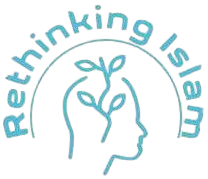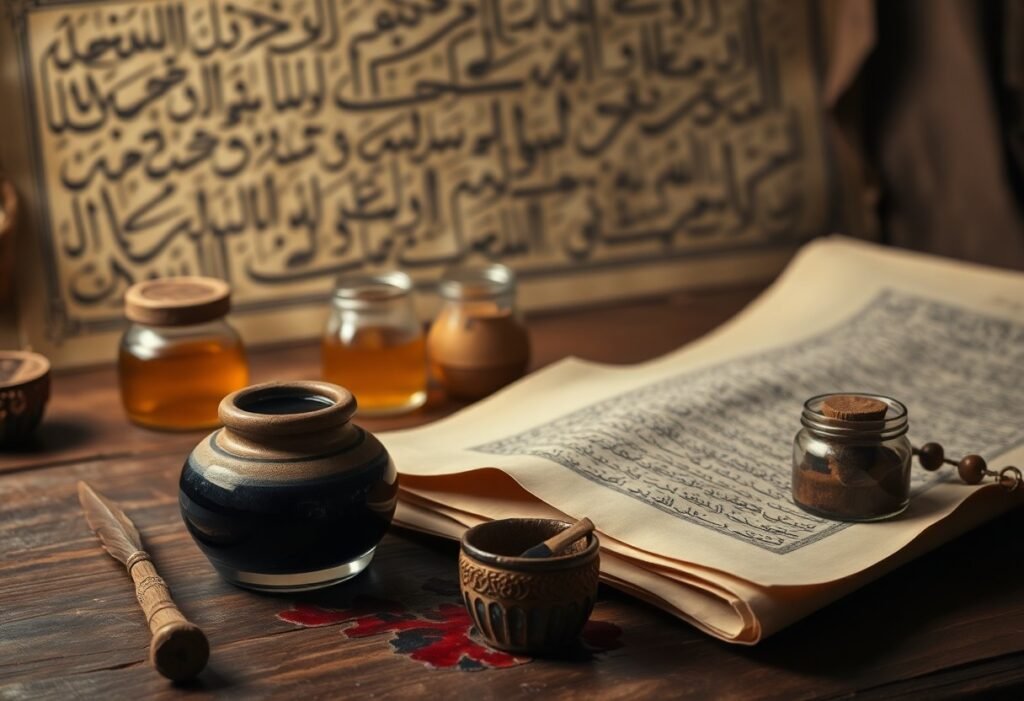Just when you thought ink was all about stylish fountain pens or printer cartridges, let me sprinkle some sweet knowledge your way! Early Muslims concocted an extraordinary ink using honey and soot, proving that creativity really knows no bounds. This unique blend wasn’t just a quirky choice; it had its perks, offering a rich color and a certain stickiness that made writing quite the experience. So, next time you put pen to paper, consider the sweet history behind your favorite writing tool!
Key Takeaways:
- Early Muslims developed a unique ink using a combination of honey and soot, showcasing their creativity in utilizing natural resources for writing.
- This ink not only served practical purposes but also reflected the cultural and intellectual advancements of the time, emphasizing the importance of knowledge and preservation of information.
- The use of honey and soot ink highlights the environmental consciousness and resourcefulness of early Muslim societies in crafting tools for education and communication.
The Alchemy of Ink: Soot and Honey Unite
What if you could transform something as simple as soot and honey into a form of communication that transcends time? Early Muslims ingeniously blended these two widely available materials to create ink that not only served practical purposes but also conveyed the beauty of their language. This alchemical fusion of nature’s elements allowed for the production of a writing medium that was both rich in color and earth-friendly, leaving a legacy of craftsmanship that continues to inspire scribes today.
Ancient Ingredients: A Peek into the Past
Diving into the past, you’ll find that early scribes sourced their ingredients from the world around them. Soot, derived from burnt organic matter, provided the dark pigment necessary for ink, while honey served as a remarkable binding agent. This fusion not only ensured smooth application to paper or parchment but also enhanced the durability and longevity of the written word, allowing tales of wisdom to endure across generations.
The Chemical Magic Behind Ink Production
Delving deeper into the world of ink, you’ll discover the fascinating chemical interactions involved. The carbon particles in soot create a remarkable pigment called carbon black, known for its opacity and resistance to fading. When mixed with honey, the natural sugars perform a dual function: they act as a preservative and a thickening agent, helping the ink adhere better to surfaces while enhancing its flow. This unique chemical concoction not only results in a high-quality ink but also reflects an extraordinary understanding of materials science demonstrated by early Muslim craftsmen.
The beauty of this process lies in the intricate knowledge of chemistry that those early ink creators had, albeit without formal education in the subject. The combination of soot and honey proved revolutionary; carbon black provided the deep, lasting color while the honey’s viscosity ensured the ink flowed smoothly from quill to page. The incorporation of water further manipulated the viscosity, allowing scribes to adjust the ink for various writing techniques. Such practical alchemy not only resulted in a functioning writing medium, but it also paved the way for the artistic expression seen in illuminated manuscripts of the era. Their cleverness allowed them to capture not just thoughts, but entire worlds on parchment, and you can’t help but respect that ingenuity as you hold a pen today.
The Role of Ink in Early Muslim Scholarship
Ink served as more than just a medium for writing; it was pivotal in the quest for knowledge among early Muslim scholars. These scholars crafted beautiful manuscripts that encapsulated a vast array of subjects, from philosophy to science. The rich, dark ink made from honey and soot endowed these texts with incredible durability, ensuring that the knowledge contained within could transcend generations. Imagine scribes hunched over their work, carefully penning their thoughts, creating a legacy that would influence the world while sipping on their sweet honey ink concoction—a combination of art and intellect.
Preserving Knowledge: Manuscripts and Beyond
Through the use of durable ink, early Muslims created thousands of manuscripts that preserved not only religious texts but also scientific discoveries and literary works. The remarkable ability of these manuscripts to withstand the test of time ensured that the wisdom of scholars like Al-Khwarizmi and Ibn Sina could be passed down through the ages. You could think of these works as the libraries of the early world, bridging cultures and eras with every ink-stained page, keeping knowledge as vibrant as the very ink that recorded it.
Ink’s Influence on the Golden Age of Islam
The Golden Age of Islam was marked by remarkable advancements in various fields, fueled in part by the widespread availability of ink. This rich, homemade concoction allowed scholars to document and share their findings, paving the way for rapid intellectual growth. The ability to reproduce texts effectively meant the sharing of knowledge was no longer confined to oral tradition; instead, it became a written endeavor, enabling cross-cultural engagement and knowledge exchange at an unprecedented scale.
As you explore the transformative influence of ink during this period, consider the sheer volume of manuscripts that emerged, with scholars meticulously copying texts not just for personal study but to create libraries that became beacons of knowledge. Innovations in mathematics, medicine, and philosophy were all recorded with these ink recipes, and as the ink flowed, so did ideas, paving the way for the Renaissance and influencing countless generations to come. You can envision bustling centers of learning where the aromatic scent of ink mingled with the excitement of discovery—imagine being a part of that vibrant exchange!
Crafting a Legacy: The Art and Science of Ink-Making
Ink-making in the Islamic world showcases a stunning blend of artistry and chemistry. Early ink artisans perfected their craft by meticulously combining natural ingredients, resulting in vibrant colors and textures. Using resources like soot, honey, and plant extracts, they created inks that adhered beautifully to parchment and paper. The process involved delicate exposure to the elements, allowing for adjustments in viscosity and color intensity. Each batch of ink reflected the unique style and skill of its maker, leaving a lasting impression on the pages of history.
Traditional Techniques from the Islamic World
Within the Islamic world, the techniques for ink-making were passed down through generations. Craftspeople employed methods like heat extraction to obtain color from various plants, while soot was suspended in honey or water to produce high-quality black ink. Calligraphers often favored gel-like ink, which offered control and reduced smudging. The labor-intensive process not only honed their skills but also elevated the status of ink-making as a respected artisan trade.
Evolution of Ink Usage in Different Crafts
As with all innovations, ink usage evolved, adapting to fit different crafts. In calligraphy, artisans sought richer hues and smoother application techniques, while painters diverged into pigments that complemented ink for illustrations. The transition from manuscript to printed materials brought on new demands for consistency and durability, leading to innovative ink compositions adapted for print. Over the centuries, these evolving practices contributed immensely to the vibrant art scene we recognize today.
Different crafts experienced a fascinating transformation in the use of ink, highlighting how necessity drives experimentation. Calligraphy still thrived, but artists began integrating ink into elaborate manuscripts, enhancing visual storytelling. With the advent of the printing press, printers demanded inks that would bring depth and sustain reproduction over time. This combination of traditional techniques and innovation not only preserved the beauty of early manuscripts but also paved the way for modern printing practices. Each step in this evolution enriched your understanding of ink as more than a writing tool; it became a medium of artistic expression across cultures and centuries.
Sweetening the Narrative: Honey’s Versatile Role
Honey, revered for its sweetness, extended beyond mere indulgence; it played a dynamic role in early Muslim culture. The combination of honey and soot not only created durable ink but also demonstrated innovation in resource utilization. Your ancestors cherished honey well beyond the page, embodying a blend of practicality and artistry that transformed everyday materials into something extraordinary.
The Symbolism of Honey Across Cultures
Across various cultures, honey symbolizes more than sweetness; it represents prosperity, wisdom, and even immortality. Ancient Egyptians viewed honey as a divine gift, often placing it in tombs as sustenance for the afterlife. In Islamic tradition, honey is seen as a healing substance, as mentioned in the Quran, strengthening its esteemed status among early Muslims as a source of nourishment and knowledge.
Practical Applications Beyond Writing
Honey’s utility far surpassed merely being an ingredient for ink; it found numerous applications in medicine, beauty, and even as a preservative. You’d be amazed to learn that honey has long been used as a natural antibiotic, known for its wound-healing properties. Early civilizations employed honey in concocting ointments and balms, showcasing its versatility in enhancing health and beauty rituals. Its natural preservative qualities made honey a staple in food storage, ensuring longevity and flavor, allowing cultures—yours included—to thrive.
Lessons from History: Modern-Day Implications
Exploring early ink-making reveals not only ingenuity but also insights for today’s sustainability movement. By understanding how natural materials like honey and soot were transformed into functional tools for communication, you can find inspiration for environmentally friendly practices that can be applied in various industries. Businesses increasingly strive for sustainable methods, and history provides concrete examples of how materials from nature can be innovatively repurposed.
Sustainable Practices Inspired by the Past
The creation of ink from basic, organic components highlights the potential for sustainable innovation. Just as early Muslims utilized readily available resources, you might consider how today’s products can be reimagined using bio-based substances. This not only reduces reliance on synthetic chemicals but also minimizes your carbon footprint.
Reviving Traditional Techniques in Today’s Context
Infusing traditional craftsmanship into modern production can yield surprising benefits. By harnessing methods that date back centuries, you’ll not only celebrate artistry but also tap into systems that have withstood the test of time. This revival can enhance product authenticity and create a niche market that values quality and heritage.
Take the revival of natural ink-making as an example. Artists and stationery enthusiasts are experimenting with DIY ink recipes that utilize honey, soot, or even plant extracts, linking the past with the present. Social media platforms showcase these craftspeople, attracting customers who appreciate the eco-friendly aspect and historical significance of their products. By engaging with these traditional techniques, you foster a deeper connection to materials and craft while promoting a sustainable lifestyle that could become a lasting trend.
Summing up
So, next time you dip your pen in ink, you might want to channel your inner early Muslim scholar who crafted writing ink from honey and soot! Just imagine the sweet scent wafting through the air as you jot down your thoughts, leaving a pretty unique signature in history. Who knew that with a little creativity and resourcefulness, you could wield an artistic flair while also staying sweet? Go on, impress your friends with this fun fact—they’ll never look at ink the same way again!
FAQ
Q: What materials did early Muslims use to make ink?
A: Early Muslims created ink using a unique combination of honey and soot. The soot provided the dark pigment necessary for writing, while honey acted as a binder, helping the ink adhere to surfaces such as parchment or paper. This method was not only innovative but also reflected the resourcefulness of early Muslim scholars and artisans in utilizing available materials for their literary and scholarly pursuits.
Q: Why was honey used in the ink-making process?
A: Honey was an important ingredient in the production of early inks because it served multiple purposes. As a natural adhesive, honey helped to bind the soot particles together, resulting in a smoother and more cohesive ink. Additionally, honey’s natural preservative properties contributed to the ink’s longevity, preventing it from drying out too quickly. This allowed for clearer and more consistent writing, which was imperative for the documentation of knowledge and culture during that period.
Q: How did the ink used by early Muslims impact their literary contributions?
A: The use of ink made from honey and soot had a significant impact on early Muslim literary output. This durable and effective ink allowed for the creation of beautifully written manuscripts, contributing to the preservation and dissemination of knowledge, science, and religious texts. It facilitated the recording of philosophical and scientific ideas, thereby playing a vital role in the Islamic Golden Age, which saw immense advancements in various fields including mathematics, astronomy, and literature.


